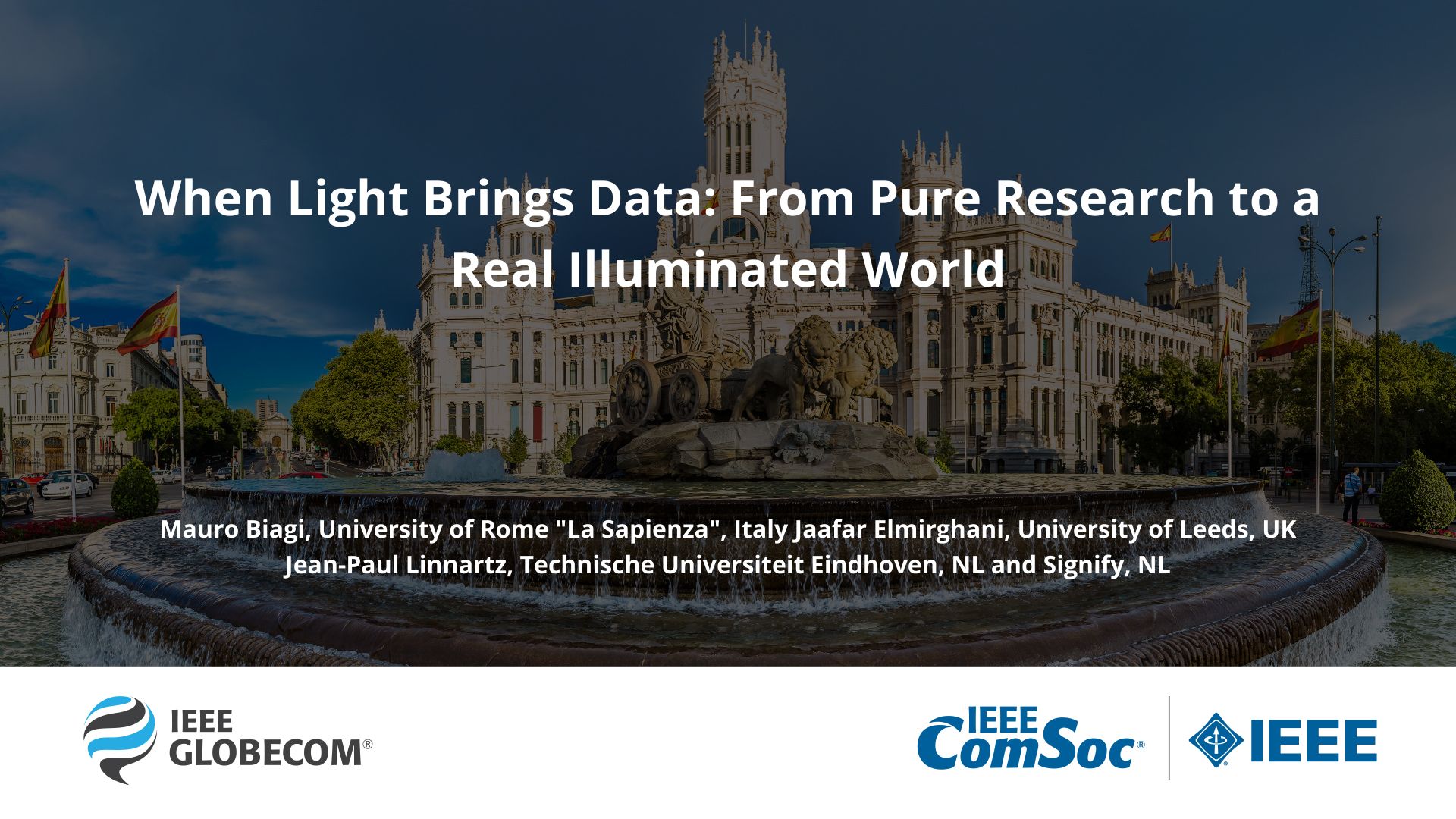
Description
In the recent years, the need for high QoS Internet services along with increasing data traffic has increased and led to bandwidth scarcity in the radio-frequency (RF) spectrum. One of the solutions to this problem is the use of Visible Light Communications (VLC). Visible Light Communications is a declination of the broader wireless optical paradigm that embraces also infra-red and ultra-violet. Recently we have seen deployment of Li-Fi (Light-fidelity) which has emerged as an innovative technology for indoor wireless by starting to augment typical RF-based systems. But eventually we expect it will replace conventional Wi-Fi access in many scenarios. Li-Fi, and VLC more generally is capable of providing multiple services like illumination, data transmission and localization at the same time making it a suitable technology for the smart environments driving the evolution towards the 6G Era. VLC has been enabled by the development of suitable light emitting diodes (LEDs) as incoherent solid state lighting sources employable for both illumination and data transmission. At the receiver side, the optical signal is collected by a photodiode (PD) and converted into a current that is further processed in order to detect information. The small size of optoelectronic hardware allows the implementation of dense multi-LED transmitters, in the form of an array or matrix at the access point, while within the portable user equipment there is a need for small device, leading to miniaturization and a reduced number of receiving elements. The engineering and communications challenges underlying these technologies will be described in some detail. Another paradigm, known as camera communication, utilizes smartphone cameras as receivers in order to provide access to general purpose devices and this will be described and discussed. Visible Light Communications is a new technology with some commonality to traditional radio frequency solutions as well as techniques that until now were specifically developed for optical wireless systems. We will outline the field of application of VLC which is very broad with uses in situations where RF may be less suitable or unsuitable such as airplanes systems, hospital environments etc. We will also describe the inherent security advantages of VLC which is able to grant an optical secrecy level in which eavesdroppers must be within a few squared meters of the user to mount a possible attack.
Event
IEEE Global Communications Conference 2021
Presenters
Mauro Biagi, University of Rome "La Sapienza", Italy Jaafar Elmirghani, University of Leeds, UK Jean-Paul Linnartz, Technische Universiteit Eindhoven, NL and Signify, NL
ComSoc Member Price
$0.00
IEEE Member Price
$15.00
Non-Member Price
$25.00


